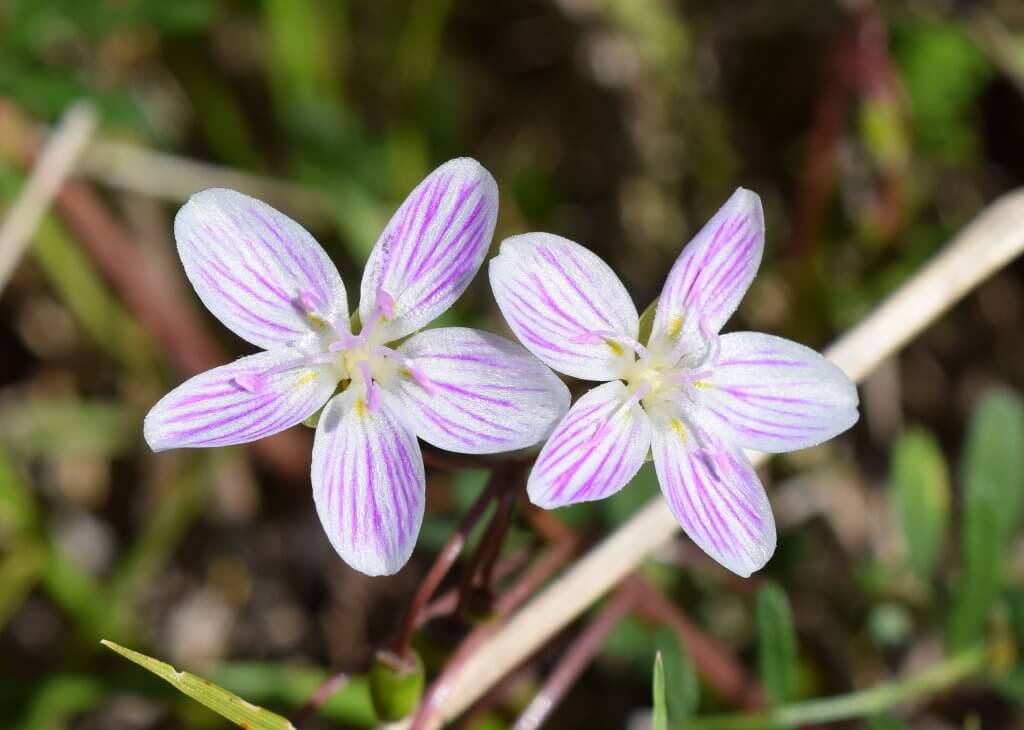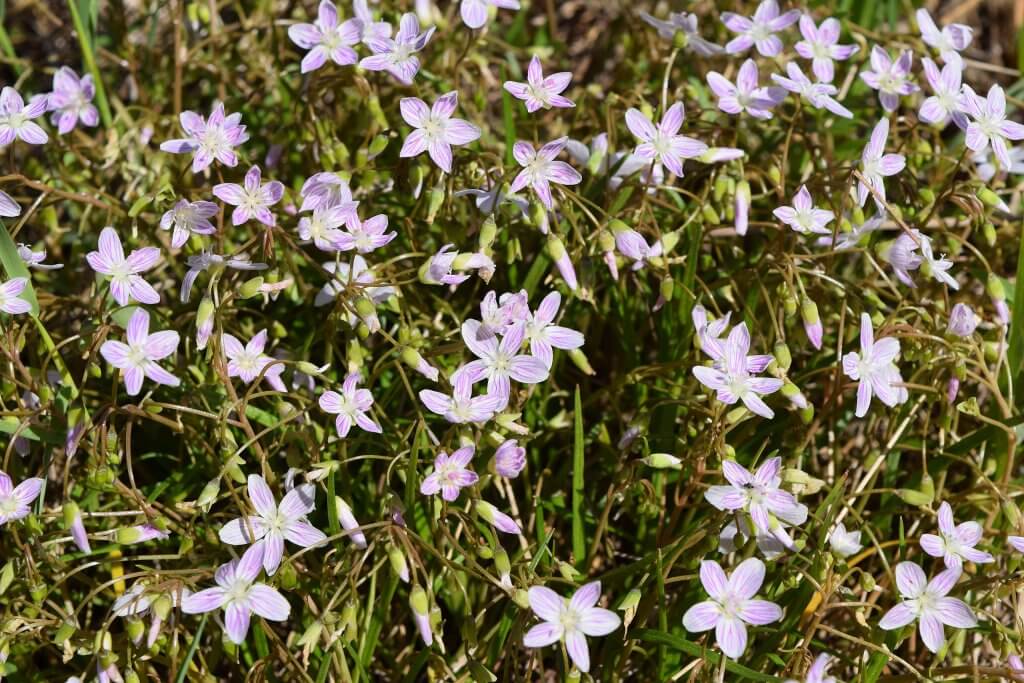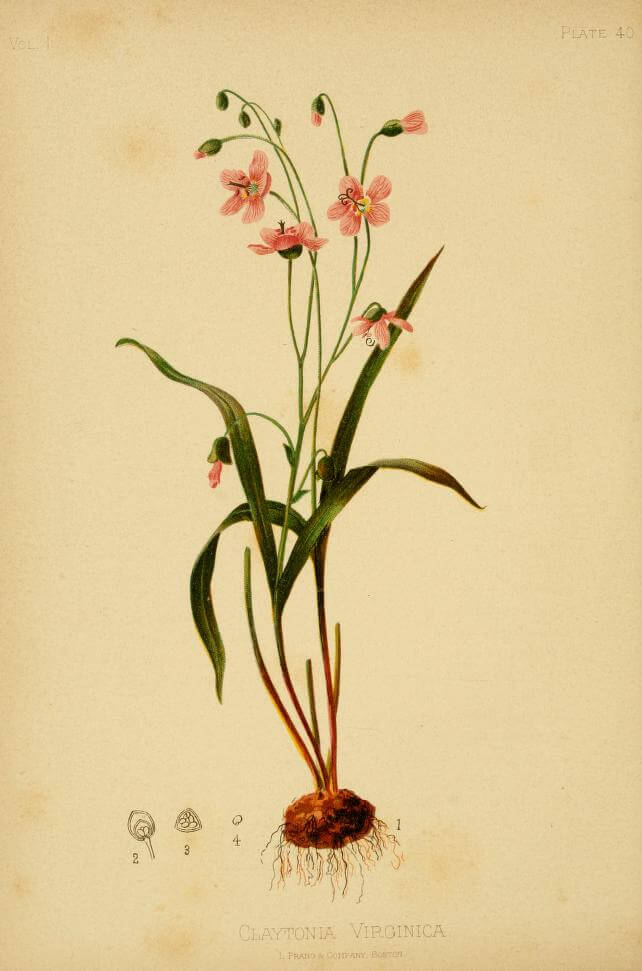Spring Beauty (Claytonia virginica), or eastern spring beauty as its commonly called, is a small perennial plant native to the northeastern states. As its name suggests, it is an attractive and delicate plant bearing white flowers with streaks of magenta. Other delightful names include eastern spring-beauty, fairy spud and grass-flower.
You’ll find them growing mainly within the northeastern states, particularly Virginia and Ohio. However they have now spread as far south as Texas and also into the midwestern states. Their habitat is usually within deciduous forests, however it is not uncommon to find them growing along verges and even in your own back yard.

Much like the wild violet, spring beauty is a trailing plant, that covers small areas of ground. The plants can also group together forming patches. Its leaves are long and lance shaped, sometimes reaching a length of up to 14cm. The delicate flowers have an arrangement of 5 white, oval petals, that have veined stripes of pink running through them. The plant is very low growing, reaching no more than 20cm in height. Its creeping roots can form small bulbous corms, which helped it to earn the nickname ‘fairy spuds’.
Edible parts and other uses
The small corms of the spring beauty are generally considered the only edible part. Although the taproot is also edible, the corms have a much better flavoring. The taste is very similar to a potato, although some claim it has a slightly sweeter flavor. As they are quite small, you do not necessarily have to peel the corms, however it can improve their overall taste.
They work very well in a potato salad, soup, omelette or simply seasoned on their own as a fried or boiled side dish.
Cautions
Spring beauty can be hard to recognise when foraging as the flowers are present for such a short window of time. It may be best to locate a supply in spring, then return to the same spot in autumn to harvest the corms.
An important thing to note is that a number of other plants can be nicknamed ‘spring beauty’, for example the ornamental landscape plant Daphne ‘Spring Beauty’ (Daphne bholua). These other plants will not always be edible, so care should again be taken to identify the plant correctly before touching and eating.

Foraging
Each flower blooms only for a maximum of 3 days each year between early and late spring, depending on the weather. This can make it hard to use these as a characteristic to recognise the plant whilst foraging. Instead you should look for a low growing plant with lance shaped leaves. You could also gently unearth the plant to see if you can find the recognisable trailing corms. However as with all wild foraging, you should only eat plants that you can fully confirm are the correct species.
Look for them in areas of partial shade and also areas that would retain more moisture, for example the bank of a stream.

Did you know…
The northeastern Native American Iroquois have a long history of using spring beauty within their medicinal remedies. As a plant native to their region it was also an important source of food. The corms of the plant were cooked and added to dishes in much the same way as a potato. The rest of the plant was also utilised in their culinary dishes.
Conclusion
Although spring beauties are not endangered, local supplies can be sporadic, so make sure you do not harvest an entire patch. Your yield will not be huge, so spring beauty will likely not feed you throughout the winter. However with careful identification they are a sweet and tasty edible that is rewarding to forage.
—————Written by Hannah Sweet
Hannah is a freelance writer and graphic designer from the UK. With a penchant for travelling, photography and all things botanical, she enjoys writing about a wealth of topics and issues, from conservation and slow living, to design and travel. Learn more about her writing and design services at www.sweetmeanders.co
Many of our readers find that subscribing to Eat The Planet is the best way to make sure they don't miss any of our valuable information about wild edibles.
See our privacy policy for more information about ads on this site






